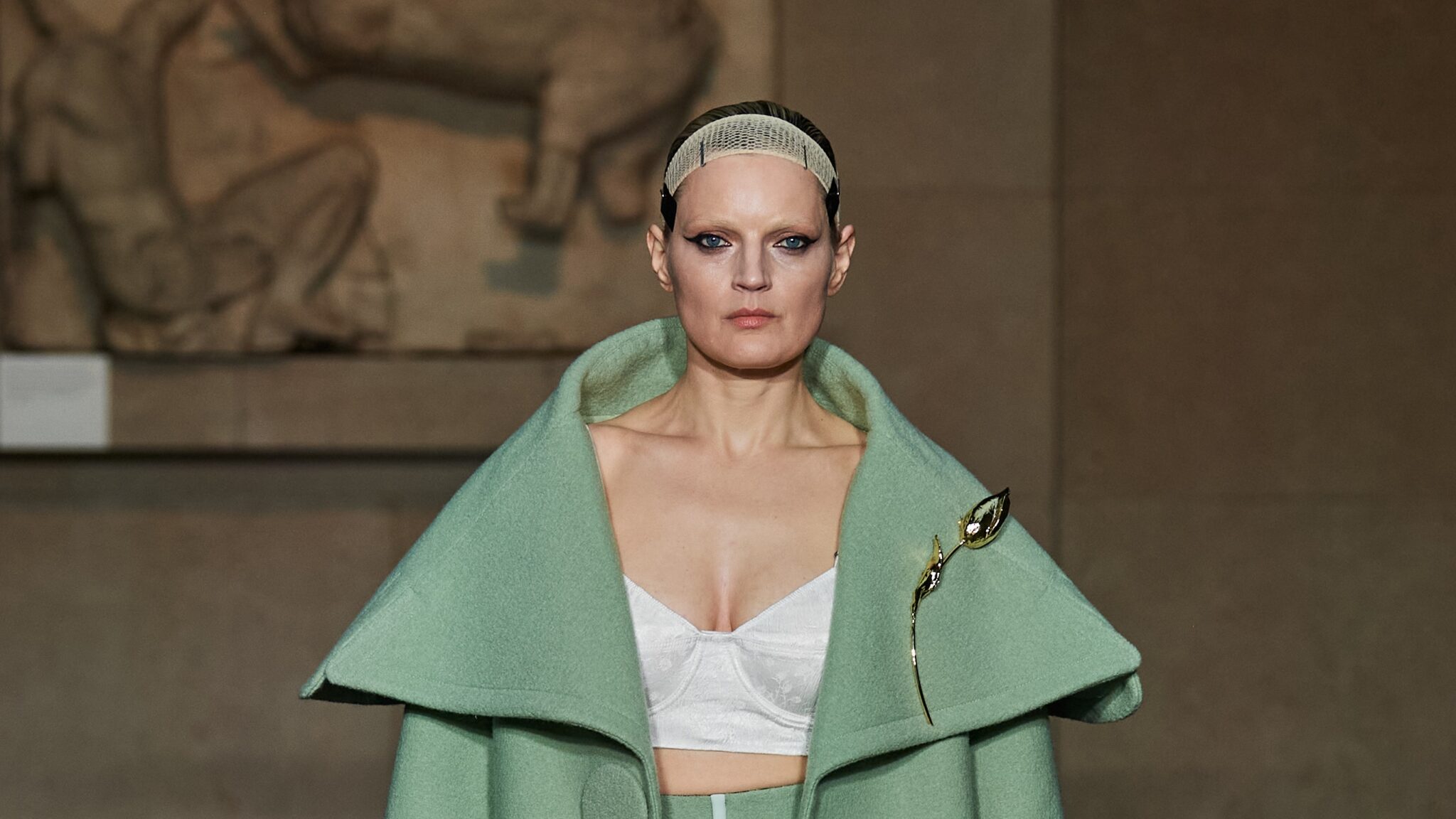We could first focus on the pea green opera coat with its extravagantly exaggerated collar at the start of the Erdem show, and then move to the same silhouette at the finale, this time studded with a rose print on white satin, but quilted. almost like the memory of a 1950s dressing gown. In between – and in the soundscape – we had Erdem Moralioglu’s extended tribute to Maria Callas, her greatness, her status and style “almost like a pop idol of the 1950s,” as he put it, and her unraveling as a tragic recluse. , undone by the betrayal of the love of her life.
His in-depth exploration of Callas’ life, on and off stage, began with his pre-collection: research into her performances and dramatic costumes around the centenary of her birth in 2023. The complex psychology of extraordinary women from the past is always the fuel for Moralioglu’s layered design approach; the plots always merge into his own design story: a romantic, flowery, perhaps raucous recasting of formal dress codes for social occasions.
Callas’ wardrobe: the small-waisted, full-skirted dresses; draped shawl necklines; swing coats – the mid-century modern textile art involved in opera productions, and the idea of glamorous marabou feathers gone a little crazy, set Moralioglu on the run. “I was fascinated by the push and pull between person and persona,” he said. Crimson dresses, roses tied to the toes of slingbacks, as if thrown at her feet on stage, and then satin pajamas and shoes reminiscent of marabou slippers alluded to that storyline.
Then you could emerge from the clothes and see that the show was held beneath the Parthenon statues in the British Museum. The antiquities of the fifth-century sculptor and architect Phidias were renamed the Elgin Marbles by the British from the time they were removed from Athens and shipped to Britain by the agents of the British 7th Earl of Elgin in early the 19th century. Their rightful cultural property has been an official point of dispute between Greece, the museum and the British government since 1983. The long, protracted negotiations between the Greek and British governments over their return, or at least a loan, to the Acropolis museum made headlines last November during yet another diplomatic standoff.
Moralioglu was certainly thinking of Callas’ Greekness when he asked permission to exhibit there: “Specifically, I really studied a specific performance that she did in 1953 of Medea.” That tragedy of Euripides was the old link, but there was more. Callas was born in New York, educated in Greece and made a name for himself on the world stage. “I wanted to show in this space that it embodied her Greekness,” he said, adding, “I was interested in the idea that someone starts somewhere and ends somewhere else.”
Was he hinting at a resonance in his own life story as the Canadian-born son of an English mother and a Turkish father who settled in London? Maybe. He also made a final comment to the press that he was moved by a photo of Callas’ ashes draped in the Greek flag before they were buried in Greece. A Greek cultural icon, repatriated. He didn’t elaborate, but the meaning seemed to be left up in the air.





